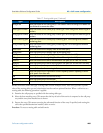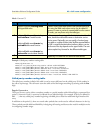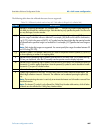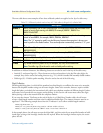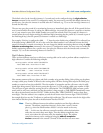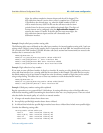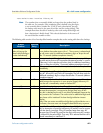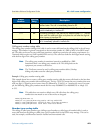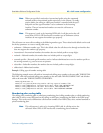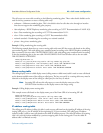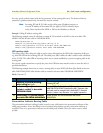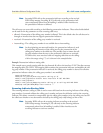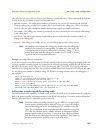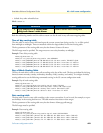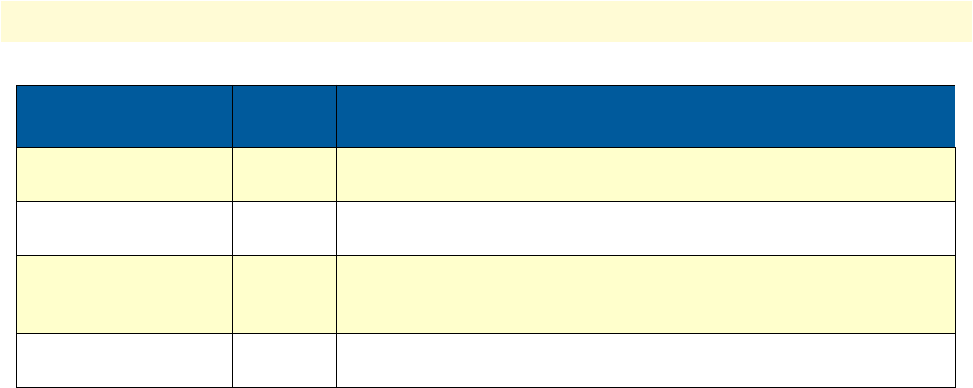
Call router configuration task list 472
SmartWare Software Configuration Guide 40 • Call router configuration
Calling party number routing table
The calling party number (calling-e164) table is used to route calls based on the calling-e164 in the call setup
message. This number in general corresponds to the extension number of a PBX or MSN of an ISDN termi-
nal. The table can be used to route calls from extensions, which have particular call routing requirements (i.e.
Terminals which require non VoIP capable ISDN services). The call router looks for the longest match starting
with the first digit of the calling party number.
Note The calling party number is sometimes inserted or modified by a PBX.
Sometimes there is no calling party number at all. This all depends on the
equipment you connect to the device.
Note The T-indicator cannot be used in calling party number tables. (Overlap
dialing only makes sense for called party numbers).
Example: Calling party number routing table
This example shows how to create a calling party number routing table that routes calls based on the last three
digits of the calling party number (the extension part). The key .%52[35]$ means that every number that starts
with any digit (.) appearing zero or more times (%) followed by 52 and a 3 or 5 matches the entry. For exam-
ple, the following calling party numbers match the first entry: 0998882523 or 0998882525 or simply 523
or 525.
Note This table does not contain a default entry. All calls where the calling party
number does not match to one of the entries are dropped.
node(cfg)#context cs
node(ctx-cs)[switch]#routing-table calling-e164 EXTS
node(rt-tab)[EXTS]#route .%52[35]$ dest-interface breakout
node(rt-tab)[EXTS]#route .%572 dest-interface DefAcc
Number type routing table
The calling or called party number type (calling-type-of-number or called-type-of-number) table is used to
route calls based on the calling or called party type of number field in the ISDN setup message. This can be
used, for example, to differentiate between national and international calls.
121 #2 Entry #1 and #2 match the dialed number of 121, but entry #2
matches better. The call is immediately placed to IF2.
191 #1 Only entry #1 matches the dialed number of 191. Thus the call is
routed immediately to interface IF1.
1111 #4 The lookup procedure is the same as for dialled number 111. The call
router waits for additional digits and places the call after the digit-col-
lection timeout to interface IF4.
1111# #4 Same as for 1111, but the pound (#) terminates the digit collection; the
call is immediately placed to interface IF4.
Dialed
Number
Selected
Entry
Description




